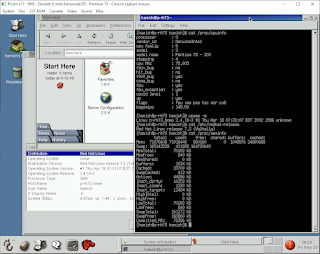Linux for ARM
Processor designs from Arm Ltd. are used in a plethora of microprocessors and SoC (System on a Chip) components. Which power a wide range of devices including: smartphones, tablets, PDAs, network routers, NAS systems, set-top boxes, etc. Some (non-exhaustive) lists of devices using the ARM architecture can be found in:
- List of products using ARM processors - Wikipedia
- [OpenWrt Wiki] Targets
- ARM Linux - Developer - Machines
The initial port of the Linux kernel to ARM began back in 1994, then targeting an Acorn A5000 running RISCOS, and grew from there through to being part of the mainline Linux kernel.
The use of ARM cores in microprocessors, microcontrollers and SoC devices, for many different vendors, meant that supporting Linux on a device would often require a specific kernel built for that specific device. This limited the availability of general purpose Linux distributions, while making vendor specific embedded Linux kernels common. Fortunately since most user-space applications use the kernel abstractions to access devices, the same user-space can be used with any kernel built for the same flavor of the architecture (see ArmPorts - Debian Wiki).
Support for a selection of ARM based systems ('arm') appeared in the Debian GNU/Linux 2.2 (`potato') release in 2000. The current Debian Linux 11 (bullseye) supports ARM through the 'armel', 'armhf' and 'arm64' (aka. 'aarch64') ports.
QEMU
The diversity of devices using the ARM processor means the QEMU system emulators for ARM provide a large number of emulated systems, with the QEMU 5.2.0 build I'm using listing 90 systems for the 64-bit system emulator (qemu-system-aarch64), and 84 for the 32-bit system emulator (qemu-system-arm). While most systems appear in the lists for both emulators (suggesting they could be implemented with 32-bit or 64-bit processor cores) a small set of systems are 64-bit only.
While most of the available systems correspond to physical hardware, the "QEMU ARM Virtual Machine" system ('virt') is a virtual system based on the use of paravirtualized devices. This provides performance improvements, particularly for I/O, and is useful for software development and testing, for cases where specific hardware features are not required.







